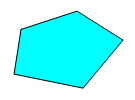You can create a gray scale effect in conjunction with a shape that you add to an image. This is a useful effect, for example, if you want to highlight a particular area of an image, without hiding the rest of the image. You can draw a shape around the area of the image that you want to emphasize and then apply the gray scale effect. The area inside the shape remains displayed in the original color, but the rest of the image around the shape is displayed in gray. You can even have multiple shapes on an image, each with a gray scale effect.
You can add a gray scale effect with a rectangle shape by using the "Gray Scale Effect Mode." Otherwise, you can use a slightly longer process and add a gray scale effect for any shape.
[Menu Proxy — Headings — Online — Depth3 ]
Example
Example
Here is an example without the gray scale effect:
In the following example, we've drawn a rectangle with a border around the top part of Simon's propeller hat. Then we applied a gray scale effect to the rest of the image around this rectangle. Notice that the bottom portion of that hat (as well as the rest of the image) is gray:
How to Use the Gray Scale Effect Mode for a Rectangle
- Open an image.
- Select Object > Effects > Gray Scale.
- Click in the image and drag the mouse to draw the rectangle over the area of the image that you want to remain displayed in the original color. Release the mouse button when you are finished. The rectangle appears on the image and the area around it is displayed in gray.
-
(Optional) You can modify the look, size, or position of the rectangle.
To Modify the Look of the Rectangle
- Double-click the shape (not the image).
- In the properties dialog for the object, use the various tabs to make changes to the rectangle. To remove the border around the rectangle, select the Appearance tab and set the Line:Width field to 0.
- Click OK.
To Move or Resize the Rectangle
- To move the entire rectangle, click somewhere in the middle of the rectangle and drag it to the new location.
- To resize the rectangle, click any of the points (i.e., small circles) around the edge of the rectangle and drag it to adjust the height and/or width.
- Click
 to save your work.
to save your work.
How to Add a Gray Scale Effect for Any Shape
- Open an image.
-
In the Object ribbon's Tools section, or the local toolbar of the Capture Editor, click the appropriate shape or graphics option.

Select this option to draw a bubble (often used for callouts).


Select this option to draw an annotation.


Select this option to draw a loop.


Select this option to draw a shape containing a cursor.


Select this option to draw an arrow.


Select this option to draw a star.


Selection this option to draw an x-agon.


Select this option to draw a square or rectangle.


Select this option to draw a polygon (i.e., a closed plane figure bounded by three or more line segments).


Select this option to draw a circle or oval.


Select this option to draw a text box (i.e., a square or rectangle with text in it).

- Click in the image and draw the shape over the area of the image that you want to remain displayed in the original color.
- Double-click the shape (not the image). The properties dialog for the object opens.
- Select the Image Effects tab.
- Click the check box next to Enable Gray Scale Effect.
- Click OK. The area around the shape is displayed in gray.
-
(Optional) You can modify the look, size, or position of the shape.
To Modify the Look of the Shape
- Double-click the shape (not the image).
- In the properties dialog for the object, use the various tabs to make changes to the rectangle.
- Click OK.
To Move or Resize the Shape
- To move the entire shape, click somewhere in the middle of the shape and drag it to the new location.
- To resize the shape , click any of the points (i.e., small circles) around the edge of the shape and drag it to adjust the height and/or width.
- Click
 to save your work.
to save your work.
Note You can also apply gray scale to an entire image in the File Properties dialog. See Applying Gray Scale to Images.
What's Next?
If necessary, you can continue editing the image (e.g., adding objects, effects, a callout; cropping the image; resizing the image). Otherwise, you can finalize the image by saving it. See Editing Images.


